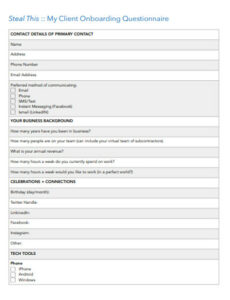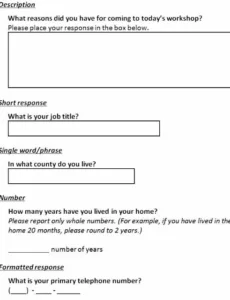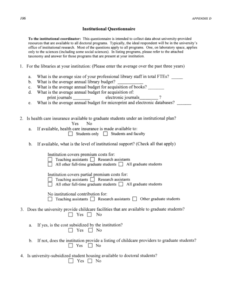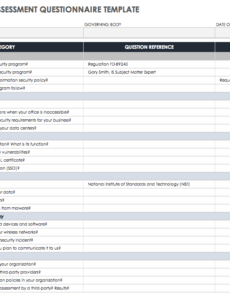Understanding the potential disruptions your business might face is crucial for long-term resilience and stability. It’s not just about bouncing back after an incident; it’s about being prepared, knowing your critical functions, and understanding the domino effect a single outage can have across your entire operation. This proactive approach is exactly what a Business Impact Analysis, or BIA, helps you achieve.
A BIA systematically identifies and evaluates the potential effects of an interruption to critical business operations, processes, and systems. It’s a foundational step in developing robust business continuity and disaster recovery plans. But how do you gather all that vital information efficiently and thoroughly from various departments and stakeholders? This is where a well-structured business impact analysis questionnaire template becomes an indispensable tool.
Understanding the Core of a Business Impact Analysis Questionnaire
A business impact analysis questionnaire is much more than just a list of questions; it’s a structured inquiry designed to systematically collect data about your organization’s critical processes, dependencies, and the potential impacts of their disruption. Think of it as a detailed investigative tool that uncovers vulnerabilities and helps you prioritize recovery efforts. Without a standardized approach, collecting consistent and comprehensive information can be an overwhelming, disjointed task, leading to gaps in your understanding of potential risks.
The primary purpose of such a questionnaire is to identify your most critical business functions, the resources they depend on (like IT systems, key personnel, or suppliers), and the financial and operational consequences if these functions were to be interrupted. It delves into the acceptable downtime for each process, known as Recovery Time Objective (RTO), and the maximum acceptable data loss, or Recovery Point Objective (RPO). By pinpointing these crucial metrics, you can then allocate resources effectively to protect what matters most.
Imagine a scenario where your main order processing system goes down. What would be the immediate financial loss per hour? How would it affect customer satisfaction? What about regulatory compliance? A detailed questionnaire ensures these questions are posed consistently across departments, providing a holistic view of potential impacts. This standardization is key to comparing data, identifying shared dependencies, and building a cohesive picture of your organization’s risk landscape. It transforms abstract risks into quantifiable impacts, making it easier to justify investments in resilience.
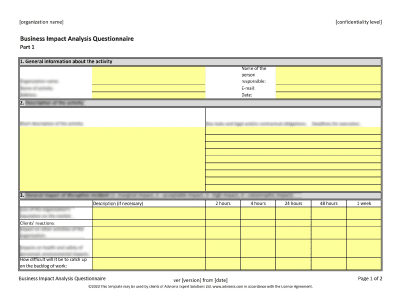
Using a pre-designed business impact analysis questionnaire template streamlines the data collection process immensely. It ensures that no critical area is overlooked and that the data gathered is uniform, making it easier to analyze and interpret. It also helps in educating stakeholders about their role in business continuity, encouraging them to think critically about their operations and the potential consequences of disruption.
Key Sections to Include
* **Departmental Information:** Basic details about the department, contact persons, and their roles.
* **Process Identification:** Listing and describing core business processes, their objectives, and their importance.
* **Impact Analysis:** Quantifying financial, operational, reputational, and regulatory impacts for various timeframes (e.g., 1 hour, 1 day, 1 week of downtime).
* **Recovery Objectives:** Defining RTO and RPO for each critical process.
* **Resource Dependencies:** Identifying crucial IT systems, software, hardware, facilities, personnel, and external vendors required for each process.
* **Interdependencies:** Mapping how processes rely on each other within and across departments.
* **Current Recovery Capabilities:** Documenting existing recovery plans or workarounds.
Crafting Your Effective Business Impact Analysis Questionnaire Template
Developing an effective business impact analysis questionnaire template isn’t just about listing questions; it’s about designing a tool that elicits accurate, actionable information from a diverse group of stakeholders. Your template needs to be clear, comprehensive, and tailored to your organization’s unique structure and operations. Begin by clearly defining the scope of your BIA – are you focusing on specific departments, critical systems, or the entire enterprise? This will help you refine the questions and ensure they are relevant to the respondents.
When formulating questions, aim for clarity and conciseness. Avoid jargon where possible, or provide clear definitions. Questions should be open-ended enough to allow for detailed responses, but also structured to facilitate easy comparison and analysis. For instance, instead of just asking "What’s the impact?", ask "What is the estimated financial loss per hour if this process is unavailable, and what are the non-financial impacts such as regulatory penalties or reputational damage?" This guides the respondent to provide specific, measurable data points.
The distribution and collection of the completed questionnaires are just as vital as their design. Consider using an online survey tool to standardize responses, simplify data aggregation, and minimize manual errors. Provide clear instructions, offer support, and set reasonable deadlines. It’s often beneficial to hold introductory meetings or workshops to explain the purpose of the BIA, walk through the questionnaire, and address any initial concerns from department heads or process owners. This engagement can significantly improve the quality and completeness of responses.
Once the data is collected, the real work begins. The information gathered from your questionnaire isn’t just for archiving; it’s the foundation for informed decision-making. Analyze the responses to identify critical processes with high impact and tight recovery objectives. Look for single points of failure, cross-departmental dependencies, and significant gaps in current recovery capabilities. This analysis will directly feed into the development of your business continuity strategies, helping you prioritize investments in resilient infrastructure, alternative workarounds, and robust recovery plans, ensuring your organization can withstand unforeseen challenges and maintain operational integrity.

